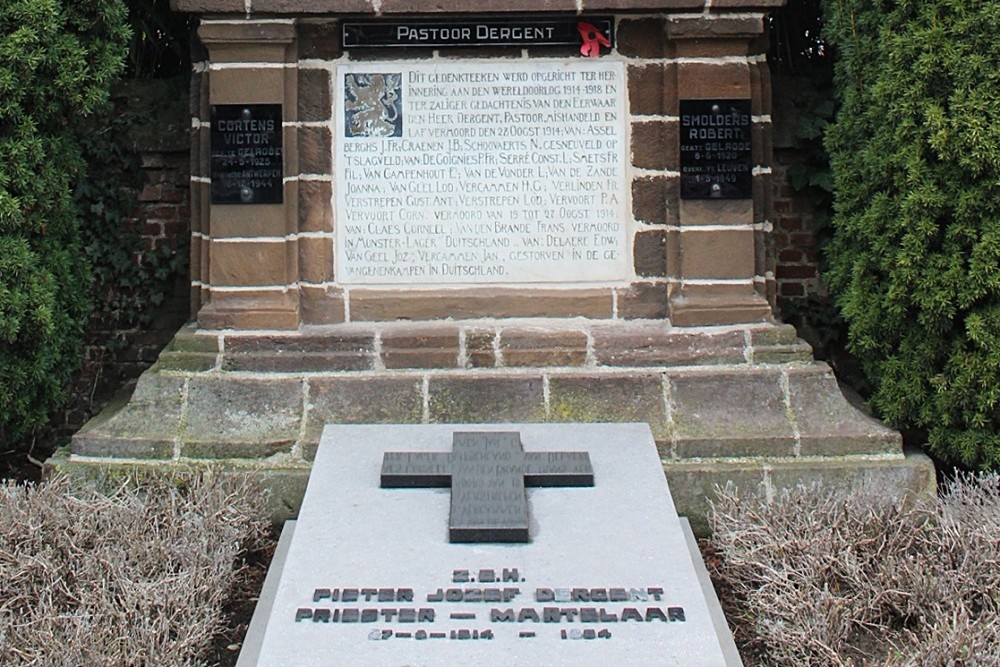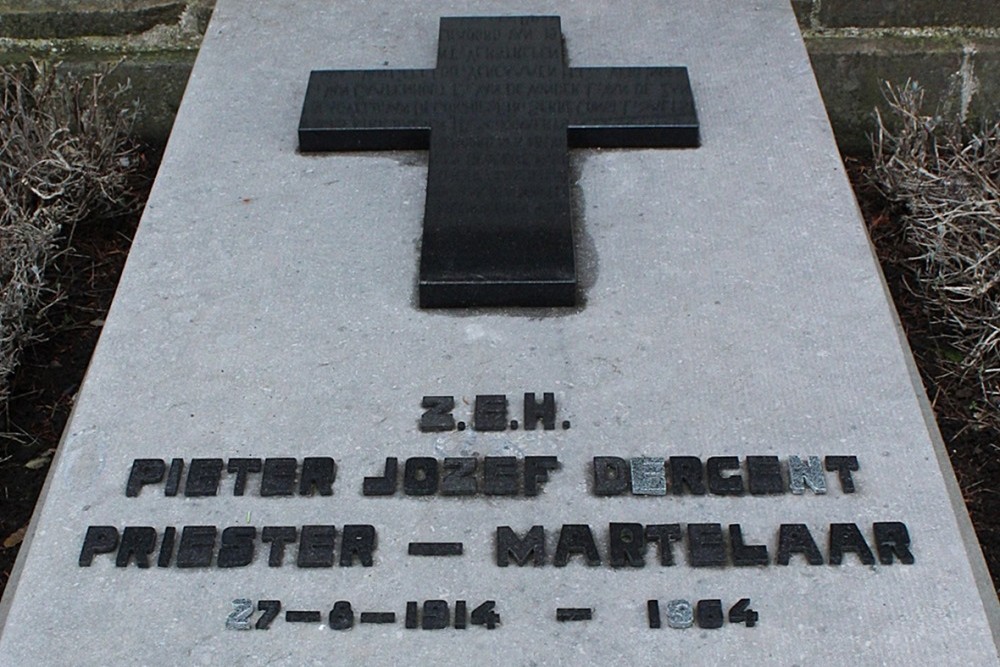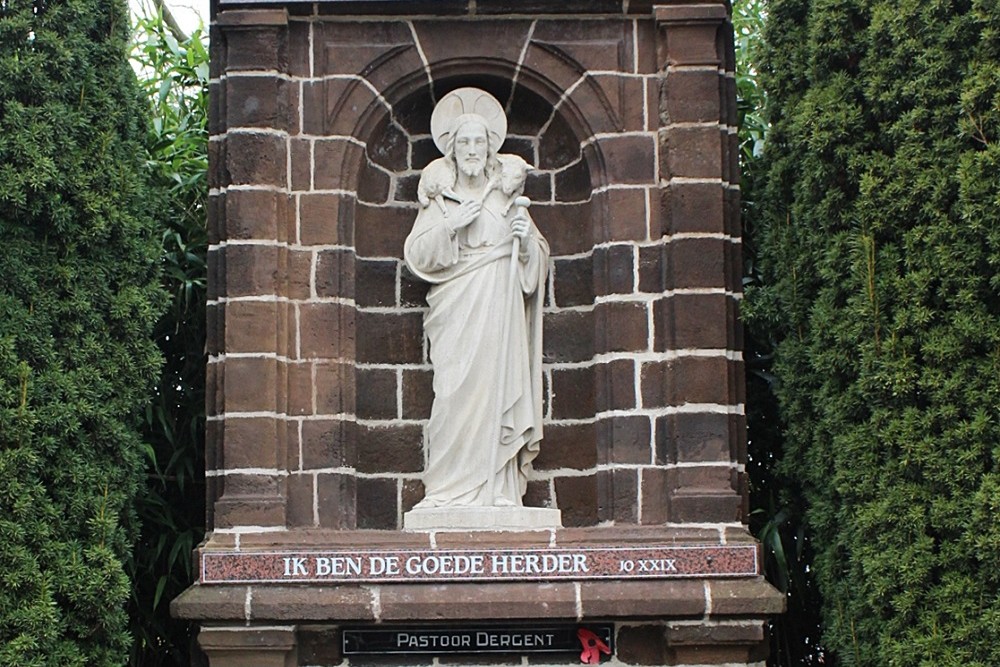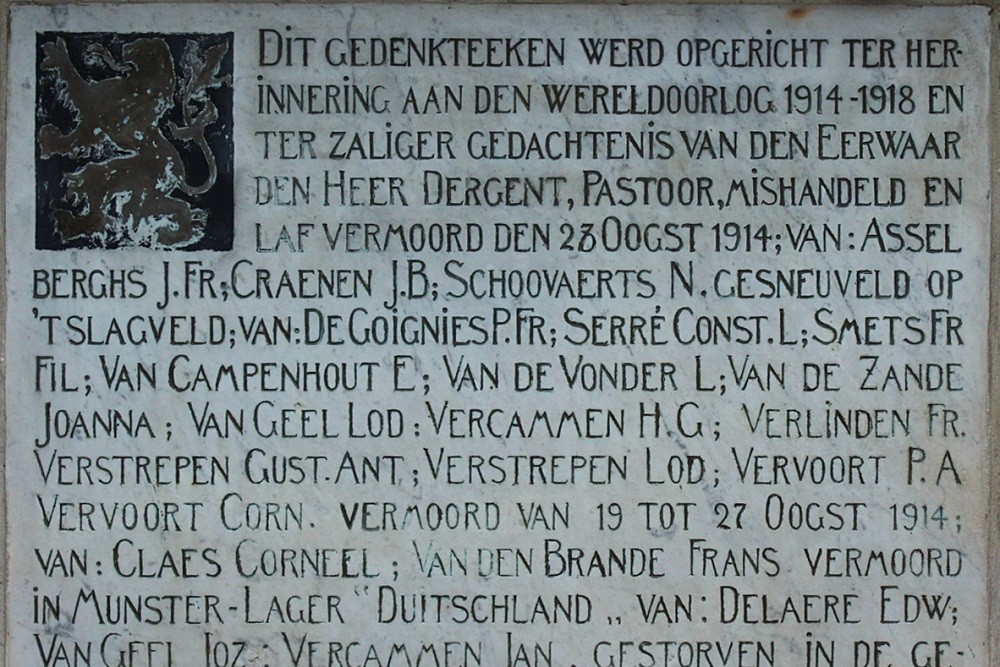Grave Monument Pastor Dergent
On the afternoon of August 19, 1914, German troops arrived in Gelrode. About 70 men were locked up in the St. Cornelius Church that evening. The majority of the prisoners were released by morning, but for the remaining 21, orders were issued to shoot every third man. Seven unfortunates were shot against the facade of a house near the church.
In the violent acts of 20 August 1914 by the German troops on the population of Gelrode, three men were seriously injured. On August 26, Pastor Dergent decided to take them to Aarschot by horse and cart. There the wounded received care in the lazaret of the Red Cross in the Damien Institute. On the return, Pastor Dergent was arrested on Petserseliestraat (today Martelarenstraat) on charges of espionage for the English and was locked up in a basement of the town hall. In the late afternoon of the following day he had to sit next to the portal of the Church of Our Lady, in the Kerkstraat. The next few hours he is brutally humiliated, tortured and taunted. On August 28, around 8:30 am, an officer and two soldiers took him to the corner of the Blijkershuis, just across the Demerbrug, and shot him. Only a few days later, on September 2, the body was discovered at the destroyed Demer Bridge in Betekom. The face was unrecognizable, but an inscription on the silver watch knew that it was Pastor Dergent. The body was hastily buried in the field.
On November 14, 1914, the body was transferred to the cemetery of Gelrode. Over the years, a cult emerged, as it were, culminating in 1948 in the excavation of the body and a new investigation. Mgr. Cruysberghs, who conducted the investigation into Dergent, even gradually became convinced that Pastor Dergent was eligible for beatification. Twelve years later, the file came to Cardinal Van Roey's desk. In 1960 the committee decided to close the case without success.
About the monument
Already in 1920, a fundraising "for erecting a memorial column" was set up on the initiative of Mayor of Gelrode, Oscar van den Eynde. That same year, on August 29, 1920, the monument was unveiled. The image of the Good Shepherd who does not abandon his sheep is symbolic of the figure of Dergent. The designer was Canon Raymond Lemaire, professor of architecture at the University of Leuven. The grave monument belongs to the studio of Van Uytvanck from Leuven.
Do you have more information about this location? Inform us!
Source
- Text: Jan Rymenams
- Photos: Jan Rymenams
Nearby
Museum
- Stedelijk Museum, Room "War and destruction" Aarschot - Aarschot
- House of the Franco-Belgian Resistance - Tielt-Winge
- Allied Forces Museum Herselt - Herselt
Point of interest
- Peace Carillon Aarschot - Aarschot
- Glass Window Church Of Our Lady Aarschot - Aarschot
- Grote Markt Aarschot - Aarschot
Monument
- Memorial War victims Sint-Corneliuskerk Gelrode - Gelrode (Aarschot)
- Memorial Pieter Jozef Dergent - Gelrode (Aarschot)
- Memorial Cross Murdered Civilians Gelrode - Gelrode (Aarschot)
Cemetery
- Belgian War Graves Nieuwrode - Nieuwrode (Holsbeek)
- Belgian Graves Veterans Nieuwrode - Nieuwrode (Holsbeek)
- Tomb Lieutenant Valeran Van De Kerchove D 'Hallebast - Betekom (Begijnendijk)
Remembrance Stone
- Stumbling Stones Martelarenlaan 179 - Kessel-Lo (Leuven)
- Stumbling Stones Koning Albertlaan 108 - Kessel-Lo (Leuven)







